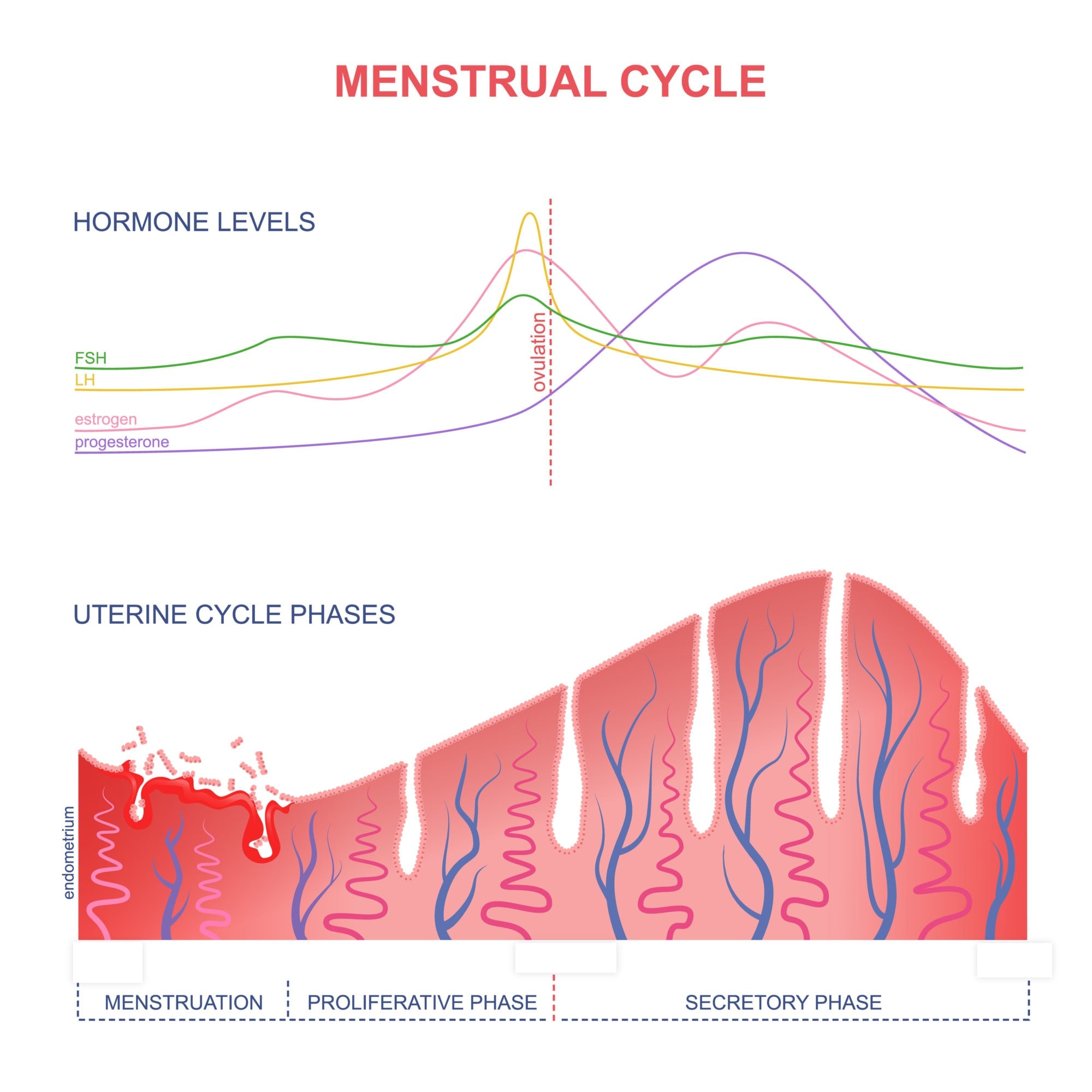How to Determine Your Fertility Window
Before we talk about how to calculate your fertility window, it might be helpful to briefly review the stages of your menstrual cycle, as hormonal changes that occur during the different phases set the stage for ovulation and provide clues as to when ovulation is coming.
As you may already know, in order for conception to take place, at least one healthy and vigorous sperm must be waiting in the fallopian tube at the moment ovulation occurs and must be able to fertilize the egg within 12-24 hours of the egg being released from the ovary.
Since sperm can only live for a maximum of 5 days in the female reproductive tract, only a small number of sperm will even survive the long journey through the female reproductive tract. Therefore, couples trying to conceive should plan to have intercourse a number of times in the days just prior to ovulation.
To do this means you must be able to predict when you will ovulate, a task that is sometimes more difficult than you might think. Fortunately, for those of us who need help, there are several reliable ways to predict when your most fertile days will occur during each cycle.
Timing of Your Fertility Window: Before and After Your Period
In the first several days of the menstrual cycle (called the follicular phase), certain hormones, specifically follicle stimulating hormone (FSH), begin the maturation process of follicles (the sacs that hold the egg) in the ovaries. In the second week of your cycle, FSH levels begin to decline and a single dominant follicle continues to develop.
This growing follicle produces increasing amounts of estrogen, which initiates the ovulatory phase. Estrogen plays a key role in the ovulatory process and helps to prepare the body for pregnancy. This hormone helps build the lining of the endometrium, facilitates the secretion of fertile-quality cervical mucus (which helps to protect and transport sperm through the reproductive tract) and triggers the production of the luteinizing hormone (LH).
By paying close attention to how your body responds to increased estrogen in the first couple weeks of your menstrual cycle, you can begin to predict ovulation. For example, many women know ovulation is just around the corner when they see an increase in production of fertile-quality cervical mucus.
Tools for predicting ovulation
Here is a brief introduction to some of the available tests and devices that can be used to help you pinpoint your fertility window.
- Ovulation Kits (OPKs) are a popular method for predicting ovulation. OPKs detect the presence of the luteinizing hormone (LH) in your urine. In many women, the amount of LH in the body surges approximately 12-36 hours before ovulation occurs. By testing with OPKs, you can identify this LH surge, which allows you to know that ovulation is just around the corner and that you are in your fertile window.
- Ovulation Microscopes or saliva ferning scopes, allow women to identify their most fertile days by observing the visual changes that take place in saliva throughout the monthly cycle. Just prior to ovulation, women experience an “estrogen surge,” and a distinct fern-like pattern in the saliva becomes visible under the microscope due to increased estrogen levels.






